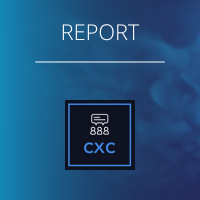Corporate Treasury: Approaches to Cash Pooling
By ComplexCountries
For treasurers, cash centralisation has always been a sort of holy grail. Given the challenges posed by different legal entities, countries, currencies, taxes, time zones and regulations, the closest we can get is cash pooling, in its various forms.

Though not perfect, cash pooling provides the main benefits of avoiding having cash in one place and debt in another, be it the saving on interest spreads or avoiding consuming valuable credit lines unnecessarily.
In this call, a group of peers shared their approaches to pooling. They gave valuable insights into the practical challenges and benefits – but they also showcased considerable flexibility, invention and innovation, including combining pooling with netting programmes, and managing balances across different currencies to optimise interest income and expense.
Domestic cash pools
All the peers start by pooling local cash balances within the countries where they operate – including, unusually, the Ivory Coast for one peer. These local pools are then incorporated into cross border structures, where possible, using in-house banks, physical cash pooling, notional pools, virtual accounts or, in most cases, a mixture of approaches. There are many countries, including the Ivory Coast, where cross border pooling is not possible – but that is not a reason for not optimising the local operations.
In-house banks
One of the peers on this call operates a full in-house bank and several are moving in that direction. An in-house bank does all the collections and payments on behalf of group entities (POBO/ROBO), and books the corresponding debits or credits to the intercompany account with the relevant subsidiary. The intercompany account is interest bearing.
This works best in countries where there are no exchange controls, especially in Europe. Even with exchange controls, peers still operate in-house banks where the centre owns the local pool, and operates the bank accounts remotely. A significant benefit is that the net interest on the current account gives the subsidiary a full and accurate view of the cost of working capital – but it does require sophisticated IT systems.
Zero balance cash pooling
This is the traditional approach, used by nearly all the peers on the call. As with all cross border pooling, it works best where there are no exchange controls. However, some heavily regulated countries, such as China, allow it subject to various rules.
Drawbacks:
- Currency differences have to be managed. Typically, this is done in headquarters: the centre will have an account in each of the pooled currencies, and deal with each entity in their own currency. The centre will then manage the FX.
- Transfer pricing rules require the balances to be interest bearing. Most TMSs do this automatically: it can be done manually, but this is labour intensive. One peer had recently joined a new company, where interest was not being paid….
- In some countries, cross border interest payments can be subject to withholding tax. This was not a major issue for any of the peers.
Some banks provide a service where they will manage the pooling and the related FX. This can remove a significant workload – but the bank’s trading activity has to be monitored.
Notional pooling
Instead of physically transferring the cash to and fro, the pooling bank will charge or credit the centre with the interest on the net cash position of each entity. Many peers use this tool in one form or another. Some of the benefits were surprising:
- Tax often preferred to avoid large cash transfers.
- If an entity in a highly regulated country is allowed to maintain an offshore account in hard currency, this offshore account can be included in a notional pool, though a physical sweep would not be allowed. One peer was doing this for the Philippines.
- Several peers combined their notional pools with monthly netting: they were able to take cash to the centre or provide funding based on the anticipated netting flows, and so keep the local balances as low as possible.
- Though it was not a main driver, several peers maximised the cash balances in countries with high interest rates, preferring to be in debt or overdrawn in low interest rate environments.
- More than one peer regularly transfers cash into or out of the notional pool account to manage balances, currency exposures and interest.
- One peer offsets currency mismatches in the treasury centre with the notional pool.
- There was a lot of flexibility in the arrangements. Some peers had target balances for accounts in their notional pool; others executed swaps to reduce the balances where this gave a better result than the bank’s interest rate.
There are drawbacks. Interestingly, the banks typically did not explain them openly to the peers on the call, but the effects were clearly visible:
- With notional pools, the interest credit or debit is paid in a different entity and jurisdiction to where the cash or debt actually resides. This creates potential tax and regulatory issues. The bank can handle these easily if it is able to square the positions internally – but it does mean that currencies are excluded if there is no tool for managing the risk: examples are Turkey and Argentina.
- This manifested itself in the requests all peers received from their notional pooling banks to avoid letting the balances grow beyond a certain point. Banks’ approaches vary: some require pooled accounts to be brought to zero once a quarter, while others require large balances to be reduced by intercompany loans or swaps.
- Notional pooling usually does not address this issue of grossing up the balance sheet: the cash and the debt in the pool remain on the balance sheet.
Overall, notional pooling offers a surprising range of approaches and benefits, though it is not a universal remedy.
Hybrid models
Most peers on the call operated both notional and physical pools, often with more than one of both. The most common structure is two or more regional pools, with a notional pool linking them at the top. This provides many of the benefits of a single world wide pool, while avoiding the concentration, counterparty risk and relationship management issues of having a single provider world wide. It is also an easy way to bring legacy regional structures into a global approach.
Virtual Accounts
To the extent they can be used to bring all collections and payments into a central location, virtual accounts are an elegant solution for cash pooling. Some peers on the call use them, especially in Europe. Adoption is still relatively low, but one peer has virtual accounts concentrating cash in the Nordics, which is then manually transferred to the treasury centre.
Banks
Many banks offer physical cash pooling services – JPMorgan, Citi, Bank of America, BNP Paribas and Deutsche were mentioned most frequently. Notional pooling is more specialised: Bank Mendes Gans (BMG) are frequently mentioned in this context, as are JPMorgan, Citi and BNP Paribas. One peer used HSBC, and had to open a new pool in Dublin following Brexit, since the concern was UK banks would no longer be able to offer overdrafts in the EU. This second pool is now being replaced by virtual accounts.
Bottom line: the technology for pooling cash and making the most efficient use of this valuable resource has improved significantly over the past few years. There are several solutions, and many banks provide the service. Treasurers have been adept at using the techniques to enhance efficiency in surprising ways.
But it remains a challenge. Though valuable, the products are not always simple, and a lot of care has to be taken to ensure full tax and regulatory compliance. The effort is clearly justified.
Full report available to CXC premium subscribers.
Access to the full report is only available to subscribers to “Treasury Practice”. If you would like to request a subscription to this topic, please message [email protected].
Can’t get enough? Check out these latest items
 https://treasuryxl.com/wp-content/uploads/2025/09/CXC-BLOGS-featured.png
200
200
treasuryXL
https://treasuryxl.com/wp-content/uploads/2018/07/treasuryXL-logo-300x56.png
treasuryXL2025-10-28 07:00:282025-10-27 16:42:55Corporate Treasury & Crypto Currency
https://treasuryxl.com/wp-content/uploads/2025/09/CXC-BLOGS-featured.png
200
200
treasuryXL
https://treasuryxl.com/wp-content/uploads/2018/07/treasuryXL-logo-300x56.png
treasuryXL2025-10-28 07:00:282025-10-27 16:42:55Corporate Treasury & Crypto Currency https://treasuryxl.com/wp-content/uploads/2025/10/CXC-BLOGS-featured-2.png
200
200
treasuryXL
https://treasuryxl.com/wp-content/uploads/2018/07/treasuryXL-logo-300x56.png
treasuryXL2025-10-08 07:00:042025-10-07 01:04:28Expert Perspectives: Inventory Financing & Corporate Treasury
https://treasuryxl.com/wp-content/uploads/2025/10/CXC-BLOGS-featured-2.png
200
200
treasuryXL
https://treasuryxl.com/wp-content/uploads/2018/07/treasuryXL-logo-300x56.png
treasuryXL2025-10-08 07:00:042025-10-07 01:04:28Expert Perspectives: Inventory Financing & Corporate Treasury https://treasuryxl.com/wp-content/uploads/2025/10/MEET-OUR-PARTNERS.png
200
200
treasuryXL
https://treasuryxl.com/wp-content/uploads/2018/07/treasuryXL-logo-300x56.png
treasuryXL2025-10-07 10:57:242025-10-07 14:55:19EuroFinance 2025: Key Connections to Make
https://treasuryxl.com/wp-content/uploads/2025/10/MEET-OUR-PARTNERS.png
200
200
treasuryXL
https://treasuryxl.com/wp-content/uploads/2018/07/treasuryXL-logo-300x56.png
treasuryXL2025-10-07 10:57:242025-10-07 14:55:19EuroFinance 2025: Key Connections to Make https://treasuryxl.com/wp-content/uploads/2025/06/Template_BLOGS-featured-2.png
200
200
treasuryXL
https://treasuryxl.com/wp-content/uploads/2018/07/treasuryXL-logo-300x56.png
treasuryXL2025-07-21 07:00:022025-07-21 08:44:35Banking & Cash Management Challenges in South East Asia
https://treasuryxl.com/wp-content/uploads/2025/06/Template_BLOGS-featured-2.png
200
200
treasuryXL
https://treasuryxl.com/wp-content/uploads/2018/07/treasuryXL-logo-300x56.png
treasuryXL2025-07-21 07:00:022025-07-21 08:44:35Banking & Cash Management Challenges in South East Asia https://treasuryxl.com/wp-content/uploads/2025/06/Template_BLOGS-featured-2.png
200
200
treasuryXL
https://treasuryxl.com/wp-content/uploads/2018/07/treasuryXL-logo-300x56.png
treasuryXL2025-06-26 07:00:022025-06-25 11:52:52Corporate Treasury: Approaches & Experiences with Multilateral Netting
https://treasuryxl.com/wp-content/uploads/2025/06/Template_BLOGS-featured-2.png
200
200
treasuryXL
https://treasuryxl.com/wp-content/uploads/2018/07/treasuryXL-logo-300x56.png
treasuryXL2025-06-26 07:00:022025-06-25 11:52:52Corporate Treasury: Approaches & Experiences with Multilateral Netting https://treasuryxl.com/wp-content/uploads/2024/07/Template_BLOGS-featured-1.png
200
200
treasuryXL
https://treasuryxl.com/wp-content/uploads/2018/07/treasuryXL-logo-300x56.png
treasuryXL2025-06-05 07:00:382025-06-02 16:33:30User Experiences with Virtual Bank Accounts
https://treasuryxl.com/wp-content/uploads/2024/07/Template_BLOGS-featured-1.png
200
200
treasuryXL
https://treasuryxl.com/wp-content/uploads/2018/07/treasuryXL-logo-300x56.png
treasuryXL2025-06-05 07:00:382025-06-02 16:33:30User Experiences with Virtual Bank Accounts https://treasuryxl.com/wp-content/uploads/2024/07/Template_BLOGS-featured-1.png
200
200
treasuryXL
https://treasuryxl.com/wp-content/uploads/2018/07/treasuryXL-logo-300x56.png
treasuryXL2025-05-13 07:00:442025-05-02 16:48:19Approaches to Investing short-term cash in Corporate Treasury
https://treasuryxl.com/wp-content/uploads/2024/07/Template_BLOGS-featured-1.png
200
200
treasuryXL
https://treasuryxl.com/wp-content/uploads/2018/07/treasuryXL-logo-300x56.png
treasuryXL2025-05-13 07:00:442025-05-02 16:48:19Approaches to Investing short-term cash in Corporate Treasury https://treasuryxl.com/wp-content/uploads/2024/07/Template_BLOGS-featured-1.png
200
200
treasuryXL
https://treasuryxl.com/wp-content/uploads/2018/07/treasuryXL-logo-300x56.png
treasuryXL2025-04-22 07:00:292025-04-18 14:19:09Managing Corporate Treasury with Spreadsheets
https://treasuryxl.com/wp-content/uploads/2024/07/Template_BLOGS-featured-1.png
200
200
treasuryXL
https://treasuryxl.com/wp-content/uploads/2018/07/treasuryXL-logo-300x56.png
treasuryXL2025-04-22 07:00:292025-04-18 14:19:09Managing Corporate Treasury with Spreadsheets https://treasuryxl.com/wp-content/uploads/2024/07/Template_BLOGS-featured-1.png
200
200
treasuryXL
https://treasuryxl.com/wp-content/uploads/2018/07/treasuryXL-logo-300x56.png
treasuryXL2025-03-04 07:00:302025-02-28 11:17:57Corporate Treasury’s relationship with their IT department
https://treasuryxl.com/wp-content/uploads/2024/07/Template_BLOGS-featured-1.png
200
200
treasuryXL
https://treasuryxl.com/wp-content/uploads/2018/07/treasuryXL-logo-300x56.png
treasuryXL2025-03-04 07:00:302025-02-28 11:17:57Corporate Treasury’s relationship with their IT department


